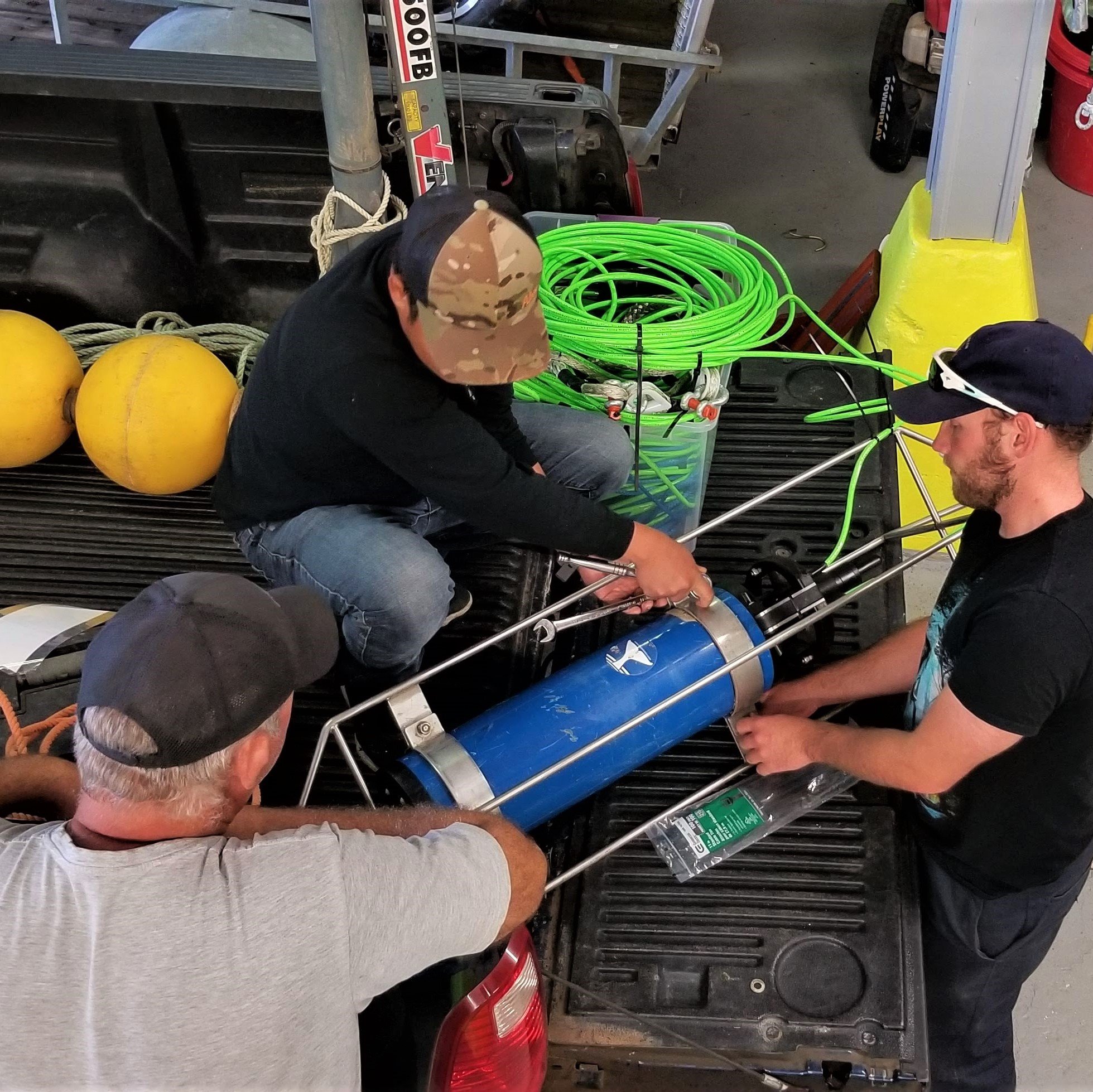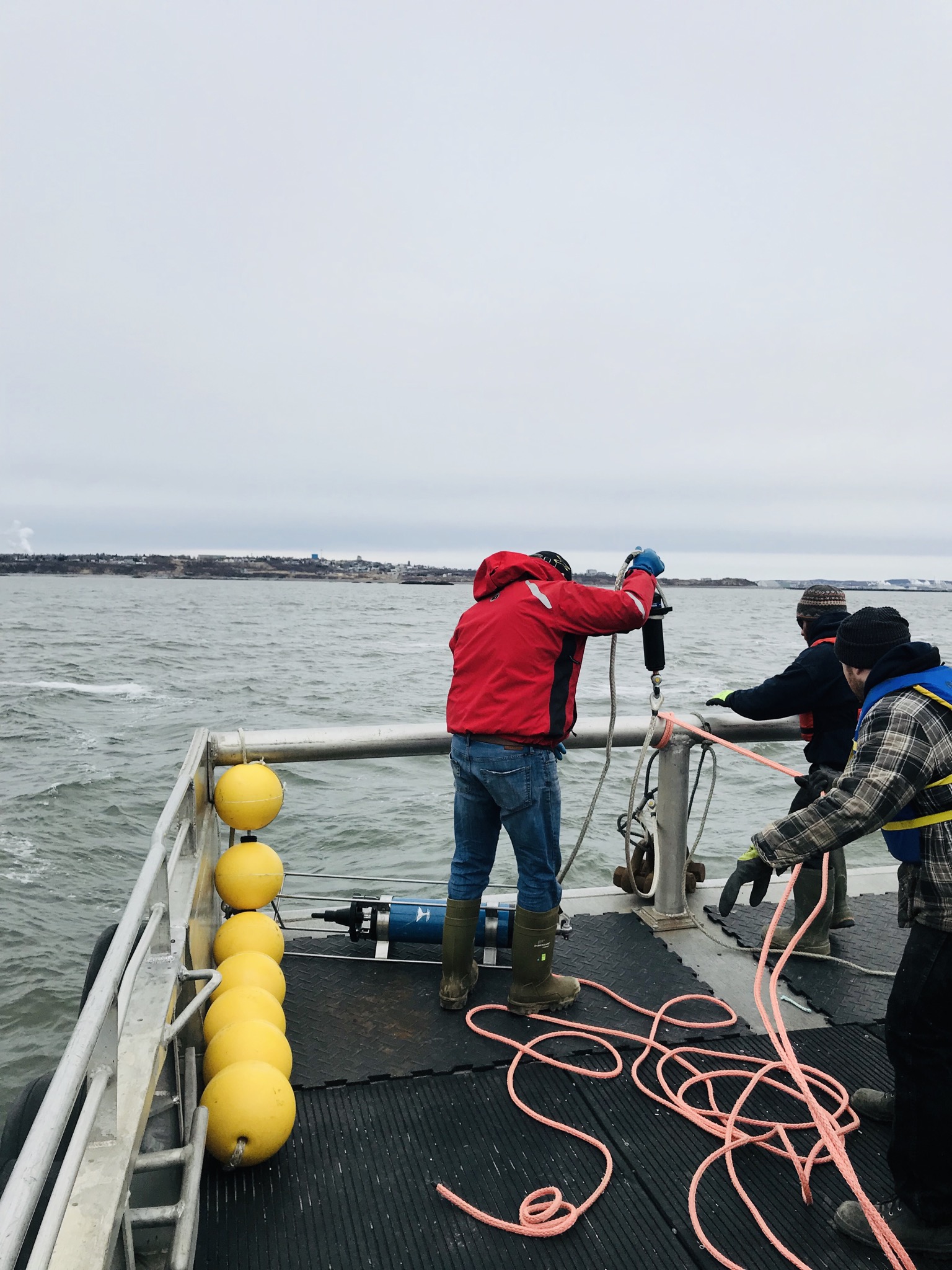Project Reports
Passive acoustic monitoring in the outer Bay of Fundy, and assessment of communication space loss in right whales (2024)
This report delivers results of this multi-year project for monitoring noise pollution levels from shipping in the outer Bay of Fundy. Through this project, passive acoustic monitoring was used both to calculate a rate of spreading loss for the outer Bay of Fundy and to record vessels leaving Port Saint John which generated a dataset of specific ship signatures. A model was designed which, through the input of vessel noise and specifics of marine mammal communication, visualizes spreading loss and inhibition to marine mammal communication. The data collected through passive acoustic monitoring, alongside additional data collected by ECW since 2015, also contributes to a larger dataset currently being used to understand spatiotemporal patterns in marine mammals.
Project : Village indoor farm & living lab survey report (2023)
In 2023, ECW staff conducted 2 public consultation events on our indoor farm and living lab model in Charlotte County. Over 80 attendees participated in an interactive survey that resulted in this report. This report aims to provide the project with local context and the needs of community members in the Charlotte County region. The objectives of the report are to understand consumer preferences, to inform crop selection for the indoor farm initiative and to make the information publicly available.
EXECUTING A LONG-TERM WATERSHED MONITORING PLAN FOR THE WEST FUNDY COMPOSITE LEVEL 1 WATERSHED (2021)
This project is designed to address goals from the New Brunswick Water Strategy: promoting better understanding of the watershed (Goal 1), monitoring drinking water sources (Goal 2), providing data which will help in preserving aquatic biodiversity and habitats (Goal 3) and by encouraging collaborative work with other stakeholders, fostering strong and open communication by reporting results to all stakeholders and communities in a transparent and accountable manner (Goal 4) (DELG, 2017). To facilitate this, a standardized way of monitoring watersheds was initiated in the West Fundy Composite level 1 watershed in 2021. This monitoring plan was designed using an integrated and holistic approach to ecosystem management, incorporating research on global best-practice and comparison with the various efforts presently being carried out in the province. Monitoring efforts in the plan include water quality, aquatic biodiversity, cyanobacteria, and watershed land usage, among others, and will align NGO, indigenous partners, and other community groups to ensure maximum impact.
town of saint andrews climate adaptation plan (2019)
The Town of Saint Andrews, New Brunswick is considered one of the most vulnerable areas to climate change impacts due to its location as a coastal community positioned on the Passamoquoddy Bay and at the tip of the St. Croix River. The area and community are exposed to rising sea-levels, the increase in intensity and frequency of severe storm surge events and flooding. Recognizing these vulnerabilities and risks, the Town of Saint Andrews has proactively taken a series of actions to begin to prepare and adapt against these climate risks. Using strategic planning, internal and external knowledge sources and experts as well as active community engagement, the Town of Saint Andrews works hard to build a resilient community to climate change.
The coastal soundscape of the Outer Bay of Fundy (2016)
Since 1992 the global shipping fleet has increased by a factor of four, and with it, the underwater ambient noise level has increased. In an effort to understand the cause and effect of noise pollution on the Outer Bay of Fundy, Eastern Charlotte Waterways completed a comprehensive study of noise levels in the coastal waters of southwestern New Brunswick. From May until November in 2015 five hydrophones (Ocean Sonics icListen HF) were used to quantify noise levels between Passamaquoddy Bay and Dipper Harbour. Each hydrophone was set to a 20% duty cycle, recording all 1/3 octave band sound levels between 10 and 12,500 Hz for the first 2 minutes of every 10 minute period.
Assessing the freshwater of Eastern Charlotte (2016)
In 1993, Eastern Charlotte Waterways (ECW) was established. Its first action was to assess the freshwater of eastern Charlotte County, New Brunswick. For two years beginning in the summer of 1994, the organization’s members visited ten watersheds between June and November, monitoring an upstream and downstream site for water temperature, pH, dissolved oxygen, and turbidity. They also monitored four popular swim locations for fecal coliform bacteria. The results of this study were published in “The watersheds of eastern Charlotte: Environmental quality assessment”. Twenty years later, in 2014-2015 the assessment has been replicated by ECW staff to identify any changes in water quality.
Charlotte County climate change adaptation action plan
Danielle St. Louis, Donald Killorn | April 2016
St. George Marsh management plan
Danielle St. Louis | April 2016
Magaguadavic River watershed management plan
Donald Killorn | May 2014
Community vulnerability assessment of climate change and variability impacts in Charlotte County, New Brunswick
Kristie Signer, Kim Reeder, Donald Killorn | May 2014
Short-term container relaying for soft-shell clams: A multi-year trial
Donald Killorn | January 2014
Chamcook Watershed: The path forward towards integrated watershed management
Emma Hebb | May 2013
Increasing capacity for stewardship to protect provincial water resources
Donald Killorn | March 2013
Monitoring vulnerable southwest New Brunswick lakes
Emma Hebb | March 2013
Volunteer lake monitoring: A New Brunswick model
Julia Carpenter | January 2013
Lake Utopia Rainbow Smelt
Emma Hebb | July 2012
An investigation of cyanobacteria dynamics in three Southwestern New Brunswick lakes
Emma Hebb | April 2012
New Brunswick Lakes Workshop summary report
Rebecca Mersereau, Agata Parlowski | February 2012
Recycling of computer waste in Southwestern New Brunswick
Rebecca Mersereau | March 2011
A comprehensive assessment of the Magaguadavic River watershed
Tim Kelly | January 2011
The water quality of Lake Utopia
Melinda Hanson-Lee | September 2003






